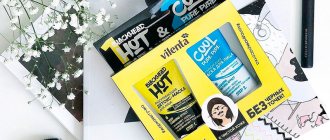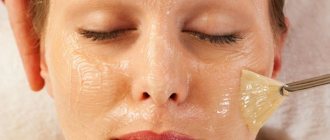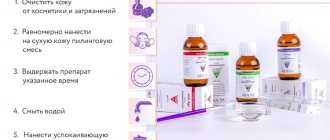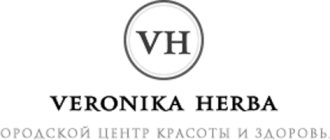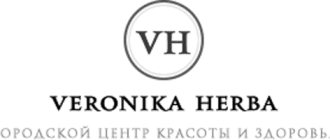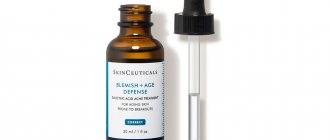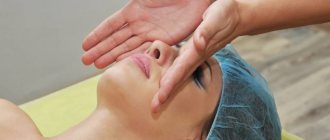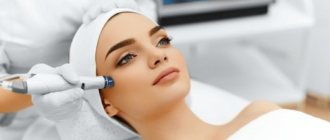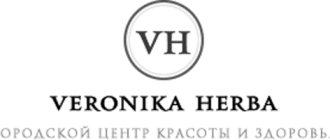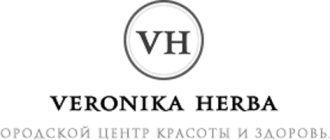What time of year is best to do it?
Cosmetologists are of the opinion that the most suitable time of year for cleansing the skin is from October to April .
An important role here is played by sun activity, gusty winds or dry air, any external factor that can injure delicate, renewed skin.
Peeling is the cleansing of the surface of the face from the stratum corneum of dead cells.
Depending on age, this cleansing is carried out on different layers of the epidermis (there are only five):
- Superficial affects the first and second layers.
- Middle - second and third layers.
- Deep - third and partially fourth layer.
Any impact on the skin (mechanical, chemical or hardware cleansing) removes its protective barrier, exposing a new delicate layer that requires delicate care.
It is easiest to protect renewed skin from ultraviolet radiation, temperature changes, dry air, and extreme heat in cold weather.
Therefore, medium and deep peels are prescribed strictly in late autumn or winter. Modern cosmetology is not as conservative as it was 10 and 20 years ago.
There are many types of cleansing that solve different problems and can be carried out at any time.
in winter
It's time for medium and deep peels. After such procedures, the skin goes through a long rehabilitation period; it recovers from three to six months, depending on the depth of cleaning.
The entire period after cleansing, the epidermis is very susceptible to ultraviolet radiation. Even minimal exposure to direct sunlight can cause a 1st or 2nd degree burn.
Which will lead to either severe pigmentation or the appearance of painful blisters, followed by wounds and burn marks.
Preparation: in winter there is a decrease in immunity; inflammation, microcracks or foci of the herpes virus often appear on the skin of the face.
Therefore, a month before the proposed cleansing procedure, you need to take immunostimulating drugs.
Kinds:
- In winter, chemical peels are popular: trichloroacetic, phenol, pyruvic, azelaic, glycolic.
- Hardware resurfacing methods: microcrystalline dermabrasion or laser cleaning.
Efficiency:
- Winter cleansing forms a reserve of nutrients inside the dermis;
- Metabolic processes are being established;
- The production of collagen and elastin is launched (lifting effect);
- The efficiency of perception of oxygen, vitamins and minerals at the cellular level increases;
- The walls of blood vessels are strengthened, internal blood flow improves.
Autumn
Features of peeling after the end of summer : a more suitable season for mid- and superficial procedures.
Cleansing aimed at restoring dehydrated and dry facial skin is popular.
Kinds:
- Fruit is a gentle procedure based on natural acids (tartaric, malic, citric) of low concentration (up to 30%). Eliminates the first signs of aging, fine wrinkles, pigmentation, moisturizes the skin, evens out the color and structure of the facial surface.
- Enzymatic - superficial or middle. Suitable for dry, thin and very sensitive skin. Eliminates the visible network of capillaries, saturates cells with oxygen, nutrients, and improves color.
- Glycolic - dry cleaning with acid. Effectively smoothes fine wrinkles, refreshes, moisturizes the surface of the face, eliminates visible blemishes (acne marks, small scars, scars) and signs of photoaging.
- Retinoic - triggers the production of “fibers of youth” collagen and elastin, tones the skin, evens out the structure, and makes the facial contour clearer.
Autumn is the time for peelings:
Spring
In spring, the skin displays a general decrease in body tone, signs of deficiency of vitamins and microelements: dull color, dryness, flaking.
Types and effectiveness: in spring it is better to carry out only superficial cleansing to replenish and moisturize the surface of the face.
Popular spring cleanses include:
- Surface fruit (acid concentration no more than 30%);
- Coral;
- Cryotherapy;
- Fitinous.
All these cleansing methods effectively moisturize the skin, smooth the surface, improve complexion, whiten, normalize melanin production, which well prepares the skin for the effects of ultraviolet radiation.
Summer
During the hot season, peeling is used to prepare the epidermis to obtain an even, uniform tan.
The second option is to rid your face of the first signs of photoaging and eliminate dryness.
In summer, only superficial peels are recommended , which are the most gentle and delicate.
What is important is post-peeling care , constantly use sunscreen, apply a nourishing or moisturizing cream to your face every day, and avoid dehydration.
Kinds:
- Lactic;
- Almond;
- Salicylic;
- Ferulic - removes toxins, significantly reduces the thickness of the keratinized layer of cells.
Is it possible to do peelings in summer?
“Acid” sounds scary, but peelings are completely safe
The following acid peels are used in cosmetology:
- Superficial
– affecting the topmost layer of skin. To carry them out, light organic alpha or beta hydroxy acids are used, which include fruit, lactic, and salicylic acids. Such procedures are usually carried out in a course, after which the skin is freed from acne, clogged pores, small scars, and its color improves. - Medium
– exfoliating skin structures to the middle layer. To carry them out, stronger organic acids are used, for example, acetic acid. After the procedure, the affected area will recover for some time, so it is better to do this peeling while on vacation. Acid removes deep scars, severe acne, and blackheads. The skin after recovery looks even better than before visiting the cosmetologist. - Deep
- affects deep skin layers with aggressive acids. They are rarely used because they are quite traumatic. Modern cosmetology offers many more gentle, but no less effective procedures.
Types of all-season facial peels
No matter what all-season facial peelings we are talking about, these are always only superficial peels. The removal of rough skin cells is carried out either mechanically or chemically. Both have their own advantages and disadvantages. In the second case, the skin is not injured, so in terms of safety, chemical peels are preferable.
Due to the fact that the mechanical impact on the skin leaves microcracks, there is a possibility of infection - to prevent this, you need to carefully care for the skin after such peeling.
Skin care after all-season facial peeling procedure
To get the maximum effect from peeling, you must follow the recommendations for further skin care:
- do not peel off flaky crusts;
- for morning and evening washing, you should use moisturizing foams that have neutral acidity (in the case of medium or deep cleansing, washing is allowed only on the third day);
- Do not rub your face after water procedures - only gently blot with a rough towel;
- You must definitely use face creams with panthenol, retinol, lanolin;
- the body needs more rest, you should walk in the fresh air more often, not forgetting to protect the skin from dust, hypothermia and exposure to the sun (before going outside, the skin must be treated with a product with a protection factor (SPF) of at least 35);
- It is better to refrain from going to the sauna and solarium;
- You should at least temporarily exclude alcohol and spicy foods from your diet.
Remember: decorative cosmetics can only be used a week after peeling, not earlier!
Judging by the responses, many patients do not have a clear idea of what all-season facial peeling is. It is a very common belief that this is a single procedure. In reality, we are talking about a variety of exfoliation methods that can be used even when it is sunny and hot outside. It is better to choose the best option for yourself with the help of a qualified cosmetologist.
In order for the results of all-season peeling to be pleasing, it is important to constantly protect the skin from sun rays with special cosmetics with SPF 30 or more (for 3-4 weeks after the procedure), not to sunbathe during the period of maximum sun activity, as well as in a solarium, and to avoid burning. All sunscreens and sprays must be applied to the skin several times during the day, because even waterproof products are gradually washed off.
Why clients choose Veronika Herba Beauty and Health Center:
- This is a beauty center where you can take care of yourself at a reasonable cost, while your face and/or body will be treated not by an ordinary cosmetologist, but by one of the best cosmetologists in Moscow. This is a completely different, higher level of service!
- You can receive qualified help at any time convenient for you. The beauty center is open from 9:00 to 21:00, seven days a week. The main thing is to agree with your doctor in advance on the date and time of your appointment.
Sign up for a consultation with a specialist by phone +7 (495) 085-15-13
, and you will see for yourself!
Indications and contraindications for the use of all-season peeling
Indications for all-season facial peeling are:
- a large number of keratinized cells in the surface layer of the skin, as a result of which it becomes rougher and the complexion becomes dull;
- acne, clogged pores, black spots on the face;
- post-acne;
- formation of pigment spots;
- loss of elasticity, appearance of wrinkles, sagging, decreased tone and other age-related changes in the skin;
- ingrown hairs;
- enlarged pores, excessive dryness or oiliness of the skin;
- striae;
- small scars and scars;
- signs of photo- and chronoaging;
- comedones, milia;
- swelling due to impaired lymph outflow;
- hyperkeratosis.
We recommend
Laser aesthetic cosmetology: the perfect technique for an ideal appearance Read more
You cannot do the exfoliation procedure if:
- there are tumors (malignant or benign);
- the client suffers from cardiovascular disease or has problems with blood clotting;
- have diabetes;
- there are allergic reactions to the drugs used in peelings or their individual intolerance;
- the client has epileptic seizures;
- have chronic skin diseases (for example, rosacea);
- the client is under 14 years old.
Reasons to temporarily refuse all-season peeling of the face or other areas are:
- Infectious diseases.
- Herpes is in the acute stage.
- Eczema.
- Dermatitis.
- Therapy with hormones and antiplatelet agents.
- Existing mechanical damage and trauma to the skin.
- A tan.
“Spring” peelings
Peelings in the spring are designed to “awaken” tired skin after winter and restore its radiant appearance. At this time, the face reflects all the signs of vitamin deficiency, lack of micronutrients and a general decrease in body tone. “Spring” peelings nourish and refresh the skin, even out its texture, and also actively prepare the skin for subsequent exposure to ultraviolet radiation.
For spring, soft and mildly aggressive peelings based on low-concentrated fruit acids, coral peeling, physical techniques (for example, cryotherapy or gas-liquid exfoliation), as well as all methods of skin whitening, are suitable. The latter, for example, includes proven and effective phytin peeling, which normalizes melanin production by the skin.
- Most spring care procedures can be performed at home; you just need to find a suitable recipe and purchase the components necessary for the product.
